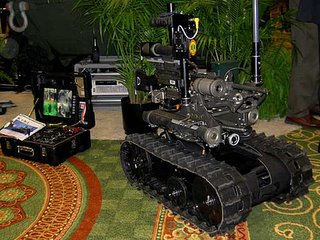
Papal favourite linked to Vatican scandal dead at 84
By Adam Bernstein
in Washington
February 23, 2006
Photo: Papal bodyguard and banker … Paul Marcinkus in 1982.
Photo: AP
PAUL MARCINKUS, the papal bodyguard dubbed "the Gorilla" and a titular archbishop who led the Vatican bank into a monetary scandal of staggering proportions, has died at his home in Sun City, Arizona.
Archbishop Marcinkus, 84, reportedly had emphysema.
After joining the priesthood in Chicago, where he was born to Lithuanian immigrants, he served in the Vatican's diplomatic corps and soon became a favourite of Pope Paul VI.
A hulking, 195-centimetre-tall rugby player, he served as bodyguard and "advance man" on Paul's historic diplomatic outreach trips abroad.
He was said to have safeguarded the pontiff in 1970 from a knife-wielding assailant at Manila airport. This, along with a penchant for one-liners and an athletic swagger, endeared the archbishop to Paul.
He was president of the bank, formally known as the Institute for Religious Works, from 1971 to 1989, and always had a zinger that explained his work: "You can't run a church on Hail Marys."
He was among the most powerful members of the Vatican elite, and it was assumed he would be elevated to cardinal or serve as president of Vatican City. But his reputation suffered markedly in 1982, when he was indicted as an accessory in the multibillion-dollar financial collapse of Banco Ambrosiano, once the largest private bank in Italy and an institution with close ties to the Vatican.
Shortly after the news broke, Ambrosiano's chairman, Roberto Calvi, sometimes labelled "God's banker" for his Vatican relationships, was found dead under mysterious circumstances - hanging from a bridge in London, in what was officially ruled a suicide. Calvi was said to have had Mafia connections, spurring speculation that he would publicly divulge some nexus between the church and the underworld.
It was sensational news carried worldwide. Archbishop Marcinkus became a central figure in the affair, and he was also one of the most enigmatic.
Largely hidden in the Vatican during the investigation, he declined to answer Italian investigators' questions about the church's role in dummy companies set up abroad to which Banco Ambrosiano funnelled more than $US1 billion.
Later, so-called "letters of comfort" surfaced, reputedly showing his guarantee of protecting bank creditors' investments. While denying wrongdoing, the Vatican paid $US244 million to creditors of the Ambrosiano bank in what it called "recognition of moral involvement" in the bank's collapse.
The Italian Government issued an arrest order for Archbishop Marcinkus and two bank subordinates as "accessories to fraudulent bankruptcy," but the Vatican, an independent state, refused to comply and cited diplomatic immunity. The Italian high court agreed, allowing him to avoid standing trial.
The Washington Post












